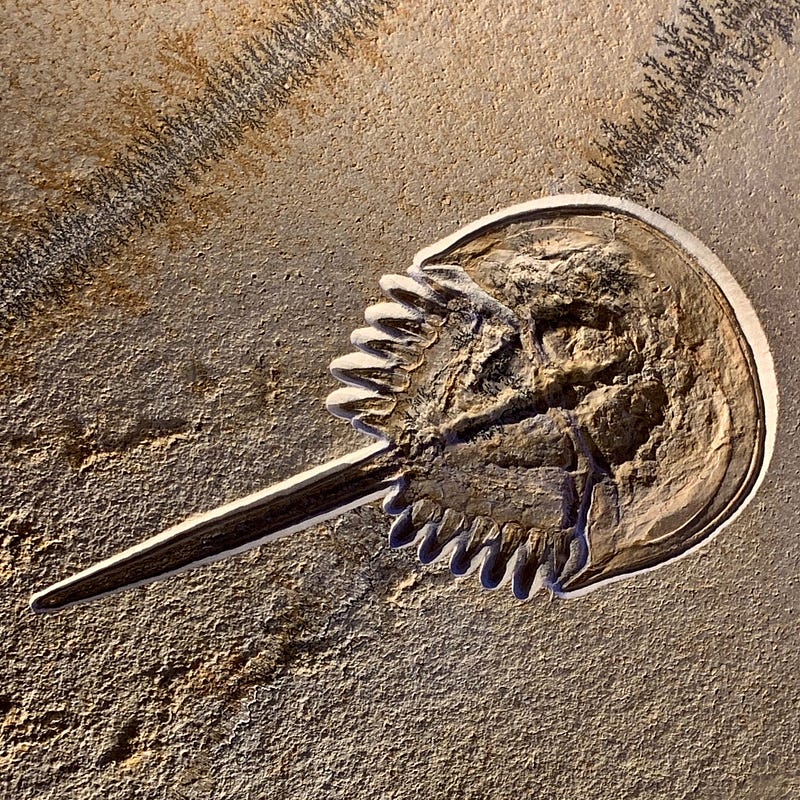The Cambrian Explosion: A Rapid Evolutionary Transformation
Written on
Chapter 1: Understanding the Cambrian Explosion
Have you ever come across the term "Cambrian Explosion"? It represents one of the most intriguing narratives in the annals of natural history. Approximately 550 million years ago, a remarkable event occurred: nearly all known animal groups emerged within a mere span of five to ten million years. How could such a phenomenon happen?

Photo by Christian Wagner on Unsplash
The scientific community did not fully appreciate a significant finding from 1909 until 1962, which proved to be a turning point in our understanding. Evidence suggested that a monumental "big bang" of life unfolded 550 million years ago. During this brief period, a multitude of animal forms appeared suddenly, transitioning from a world dominated by unicellular organisms to one bursting with diverse life.
Section 1.1: The Groundbreaking Discovery at Burgess Shale
In 1909, Charles Doolittle Walcott made an extraordinary discovery at Burgess Pass in Yoho National Park, Canada. He uncovered a vast fossil deposit that would later be recognized as a treasure trove of information. A year later, he began systematic excavations with his sons, and over fourteen years, they unearthed around 65,000 fossils.
However, Walcott did not grasp the significance of these findings during his lifetime. As a paleontologist, his interpretative skills were limited, and he categorized these fossils only within the known animal groups of his day. Consequently, the scientific community remained indifferent to his work until long after his death in 1927.
In 1962, Alberto Simonetta revisited Walcott's collection, revealing that the fossils did not correspond to any living animal forms. Instead, they showcased an astonishing variety of anatomical structures that were previously unknown.
#### Subsection 1.1.1: Renewed Excavations and Findings
In 1966, Harry Blackmore Whittington reignited interest in these fossil beds, expanding his excavations to both the Burgess Shale and the nearby Raymond Quarry. The combined discoveries from Walcott's original finds and the new excavations painted a vivid picture: nearly all fundamental animal body plans known today appeared during this period, along with numerous others that did not persist.
The Cambrian period marked an evolutionary explosion, resulting in a remarkable diversity of species emerging in an incredibly short geological timeframe.
Chapter 2: Theories Behind the Cambrian Explosion
The first video titled "What triggered the Cambrian Explosion? with Professor Rachel Wood" delves into the factors that contributed to this remarkable period in evolution.
The second video, "The Cambrian Explosion and the evolutionary origin of animals with Professor Paul Smith," explores the evolutionary implications of these findings.
The Cambrian explosion, a pivotal moment in life's history, signifies the onset of this geological era, while the preceding time is referred to as the Precambrian. No complex multicellular fossils have been found from the Precambrian, leading to the hypothesis that the Cambrian explosion represented a rapid evolutionary initiation.
Two primary theories attempt to explain this rapid diversification. One suggests that the emergence of complex multicellular organisms catalyzed their own differentiation through competition for resources and survival. Another posits that environmental conditions prior to the Cambrian were unsuitable for the development of complex life forms, and that changes in factors like oxygen levels or water chemistry enabled this evolutionary leap.
Section 2.1: The Ediacaran Fauna and Its Implications
In 1946, geologist Reginald Claude Sprigg discovered Precambrian fossils in Australia's Ediacaran Hills. This discovery, evaluated later, revealed that many of these multicellular organisms coexisted with Cambrian species, challenging the notion of a complete restart in life's evolution.
The existence of Ediacaran fauna suggests that more advanced multicellular forms may have existed before the Cambrian, highlighting that the absence of transitional fossils does not negate their potential existence. Fossilization is an exceptionally rare occurrence, with estimates suggesting that only a tiny fraction of organisms ever become fossils.
Section 2.2: Reevaluating the Cambrian Explosion
Today, few paleontologists or geologists subscribe to the original interpretation of the Cambrian explosion. However, a consensus on its significance remains elusive. While no definitive fossils of transitional forms have been discovered, it is entirely plausible that they existed.
The understanding of evolution suggests a gradual development of life over time, rather than sudden creations of entirely new forms. The reevaluation of the Cambrian explosion continues as new findings emerge, particularly concerning pre-Cambrian multicellular organisms.
As research progresses, the scientific community remains hopeful for groundbreaking discoveries that may shed light on this pivotal period in evolutionary history. Science is a journey of ongoing understanding, not a proclamation of absolute truths.